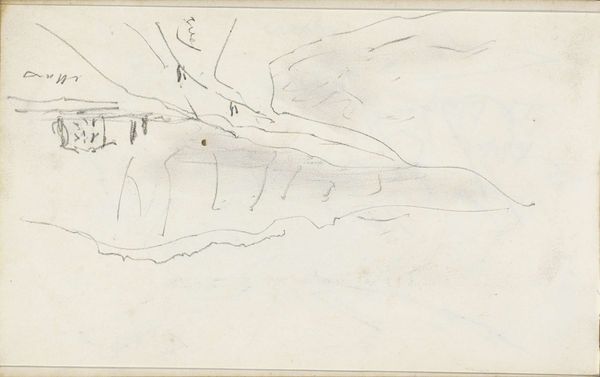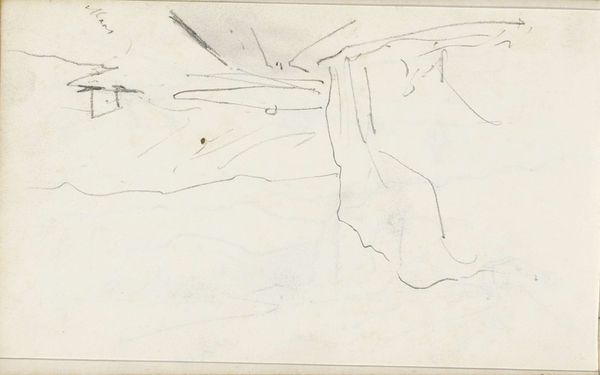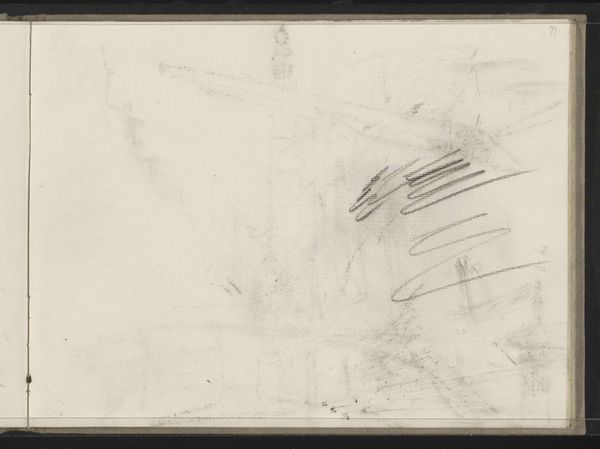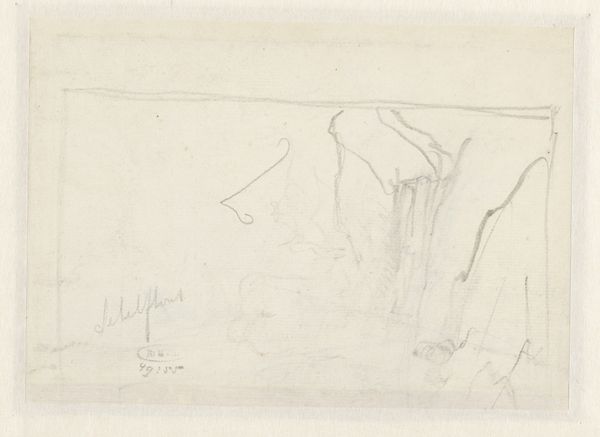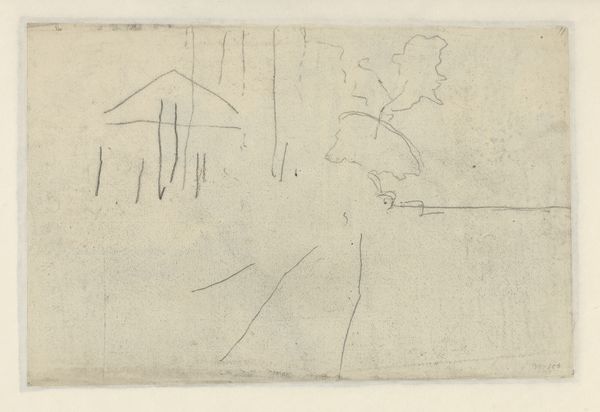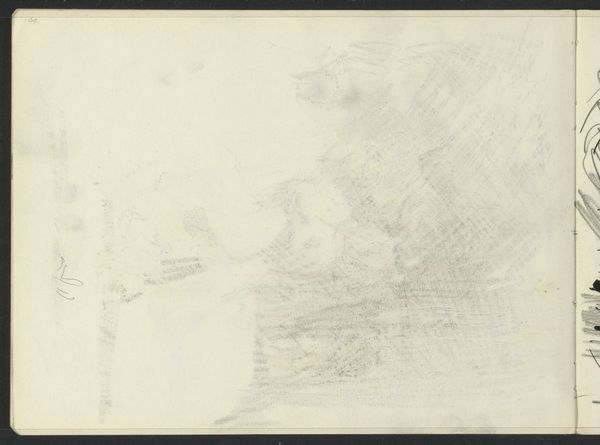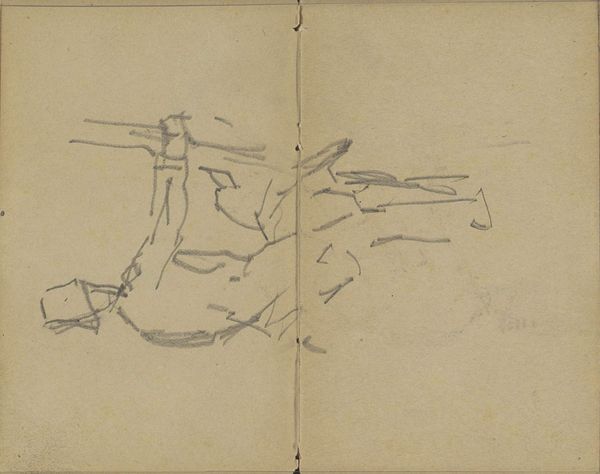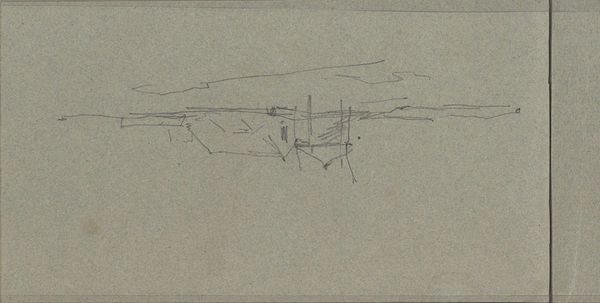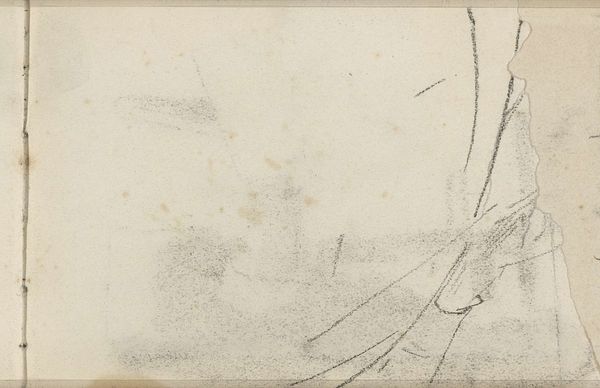
drawing, paper, pencil
#
drawing
#
landscape
#
paper
#
romanticism
#
pencil
Copyright: Rijks Museum: Open Domain
Curator: I am struck by the feeling of transience conveyed by this quick sketch, its seeming impermanence emphasized by the white of the page around the loose rendering of the forms. Editor: And it's that transience, that very ephemeral quality, that seems to echo the artistic climate of the mid-19th century, doesn't it? Here, at the Rijksmuseum, we have "Landscape with a Church on the Maas," a pencil drawing on paper by Johannes Tavenraat, likely created between 1840 and 1841. It is very typical of Romanticism, favoring emotion, a deep awe for the power of nature, and also very much embracing this very specific area and culture. Curator: Yes, the landscape itself almost feels like a dream, or perhaps a fleeting memory captured with rapid, decisive strokes. That church becomes almost more symbolic than structural in the work's simplified form. We have that steeple falling like an arrow in an angle to the rest of the picture. Does this perhaps refer to ideas of religious reform and how it also transformed Dutch society in that moment? Editor: That's insightful. Certainly, the period saw social upheaval, and this quick sketch could be interpreted as an allegory for change, where the church, traditionally a symbol of stability, is rendered with such vulnerability. Consider the Maas River, a historic artery for trade and communication. In Romanticism, rivers also symbolized the journey of life, an unstoppable progression towards some ultimate unknown. And here it's depicted as little more than a gentle scratch on paper. Curator: The pencil itself is interesting here; the drawing medium grants this depiction a feeling of immediacy and informality, yet, at the same time, elevates an otherwise unremarkable scene into something that is contemplative and perhaps profound. A perfect demonstration for how the period used simple art styles for a deep exploration of themes relevant for them. Editor: I agree entirely. It invites reflection on our relationship to the landscape, how these spaces, and particularly spaces considered 'home' in Dutch society at the time, continue to impact us. It is that cultural relationship that defines, and will continue to define, both artists and people for a very long time. Curator: It is interesting how an otherwise quickly drafted piece on a small surface has managed to remain with a cultural memory, almost like an anthem dedicated to landscape art. Editor: Precisely, it continues to elicit the universal awe that makes this simple drawing a cultural piece worthy of historical reflection and understanding.
Comments
No comments
Be the first to comment and join the conversation on the ultimate creative platform.
